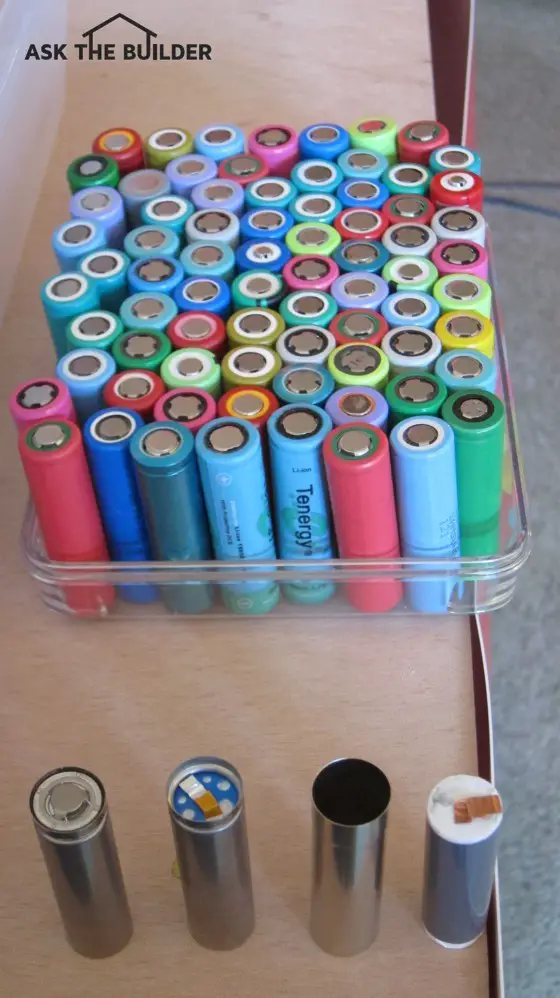Lithium-Ion Batteries and Cordless Tools
Quick Column Summary:
- Cordless vs Corded tools
- Lithium ion batteries
- All batteries are not the same
- Get well built batteries
DEAR TIM: It seems every month there's a new cordless tool. The power claims and run time seem unbelievable. Before I start investing heavily into cordless tools, I'm wondering if you can weigh in. Am I a victim of inflated marketing claims or are cordless tools advancing to where they really can perform equally with a corded tool? What's the latest information you can offer about lithium-ion batteries and what separates a good cordless tool from a great one? Mike S., Fall River, MA
DEAR MIKE: There's an old saying about being at the bus stop when the bus comes by. You, my friend, just got on the Lithium-Ion Express. I say this because just days ago I arrived back at my office from a tool conference hosted by a power tool company that's probably the leader in cordless power-tool technology. They make amazing batteries and tools. I ate dinner with their head engineer that's in charge of their entire lithium-ion battery division and had an extended one-on-one discussion about batteries.
As you might expect, I asked him all sorts of pointed questions about where the industry is on the power and technology curve with lithium-ion. I also asked about the difference between battery packs that appear to look the same on the outside. I was stunned to discover there's a significant difference between battery packs from one power-tool manufacturer to another.

These may look like yummy candy, but they’re lithium-ion battery cells that get inserted into battery packs for cordless power tools. Photo Credit: Tim Carter
Most cordless power tools have a squarish plastic case that's the battery pack that plugs into and powers the tool. Inside this case you'll discover multiple small cylinders that contain the lithium-ion. These small cells in shape and size resemble a five-dollar roll of dimes you might get from the bank. In the most simplistic sense, if you want more voltage, you need to have more of these cells connected to one another in the large black plastic case.
As you might expect, not all lithium-ion cells are the same quality. Not only that, the way the cells are packed inside the case and connected to one another is not the same. If the cells are not protected against water and shock, the power pack can become useless if left in the rain overnight or dropped a few times.
To answer your question about the power claims, I'm here to tell you that the tools I tested will satisfy those claims. Believe it or not, it's possible to have a cordless tool last all day on just one or two batteries. It's all a function of how much work the average person does with a tool in a given day.
If you plan to have the tool on for eight hours straight, the batteries will not last. Most contractors don't work this way. They use their power tools for short bursts of time. For example, an electrician may use his drill to bore holes in 20 or 30 wall studs and then set the tool down while he runs cable through the holes.
I discovered a few magic ingredients most people don't know about inside the new cordless power tools that are making them faster and more powerful than corded tools. Not only are the lithium-ion batteries better, but the motors inside the best tools have better parts and are better engineered. The real secret sauce is a third ingredient you probably never thought might be in a cordless tool. There are micro-electronics inside the tools and the batteries!
These micro-electronics contain tiny computers that allow the tool to communicate to the batteries and vice versa. If the computers sense you need more power to cut a thick board or drill through dense lumber, they allow more power to pass from the battery to the motor. If the tool senses it's not under much load, the computers become stingy with the power and only allow enough into the motor to satisfy the demand. This preservation of the power allows the cordless tool to run for hours and hours.
One of the questions I'd ask about when you're looking at cordless tools is what happens if rain gets onto or inside the lithium-ion battery. I saw a battery pack that was ruined in less than twenty-four hours because water had filled the pack. This water caused significant corrosion within hours that rendered the battery useless.
The battery packs I saw from the tool company that sponsored the event had ingenious drainage channels and holes that allowed water to exit the battery in the event it entered the pack. The micro electronic components were also coated with a water repellent so they would not short out if water got on them. This kind of engineering helps preserve your investment as you migrate to cordless tools.
I did hands-on testing of quite a few new cordless tools and can tell you that if I had been blindfolded, I would have sworn I was using a traditional corded tool that ran on standard 120-volt current. In my opinion, the days of corded power tools are numbered.
I feel it's safe for you to purchase cordless tools so long as you do your homework. My cardinal rule when buying any tool or building product is to use price as a barometer. The best tools and products almost always cost more because they contain better parts, better technology and better engineering.
Column 1053
One Response to Lithium-Ion Batteries and Cordless Tools